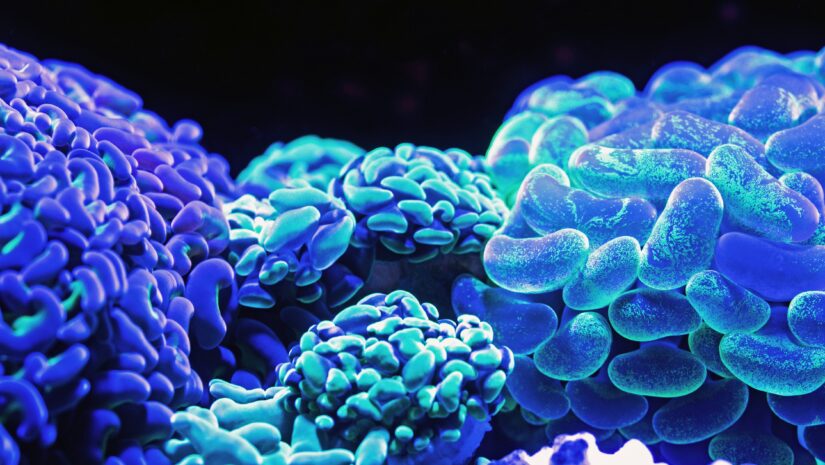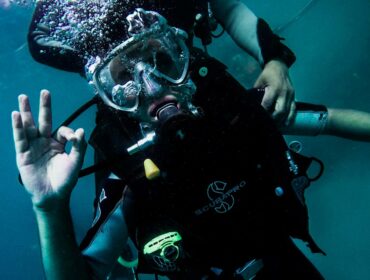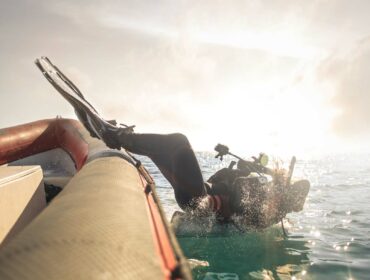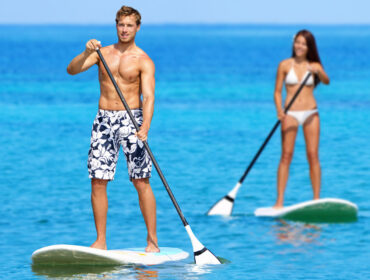Before diving headfirst into underwater photography, having the right tools and techniques is something you have to make sure of. Become a professional or simply capture marine life examples for research or personal passion projects! No matter what, studying up on underwater photography tips will prepare you for success.
First things first. Underwater photography cameras!
For professionals, DSLRs and mirrorless cameras like the Sony Alpha series offer unbeatable quality when paired with waterproof housings. Beginners often gravitate toward cameras like the Olympus Tough TG-6 and underwater housing for it. It’s known for its user-friendliness and durability.
Underwater photography GoPro
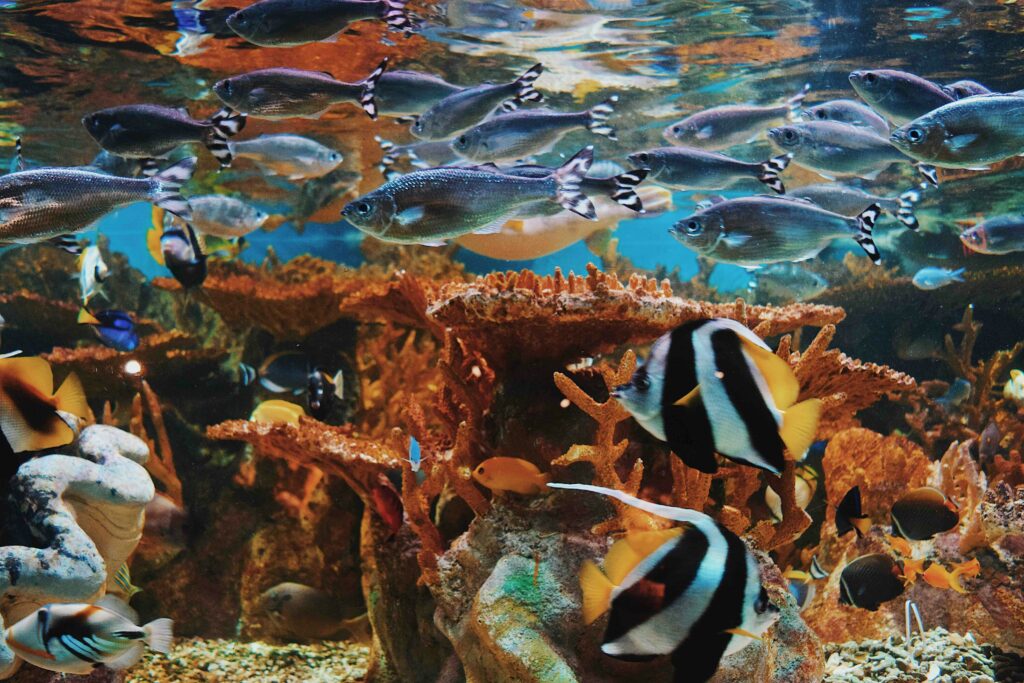
Besides the Sony Alpha and Olympus cameras, the GoPro HERO12 is a standout choice. Its Emmy® Award-winning HyperSmooth 6.0 stabilization ensures silky smooth footage. Meanwhile, features like high-dynamic-range video and photo capabilities let you capture marine animals in stunning detail.
With 360-degree horizon lock, night effects, and even automatic highlight videos sent to your phone. Plus, it’s waterproof straight out of the box to 33 feet (10 meters) — no housing required! However, here are some requires you might need for it:
- Wide-angle and macro lenses to capture as wide or close as you want to.
Get essential underwater photography equipment
Here’s a true underwater photography tip: the right equipment can make or break your underwater photography output. Beyond the camera, a few key tools can help underwater photographers achieve more. They ensure safety, clarity, and creativity.
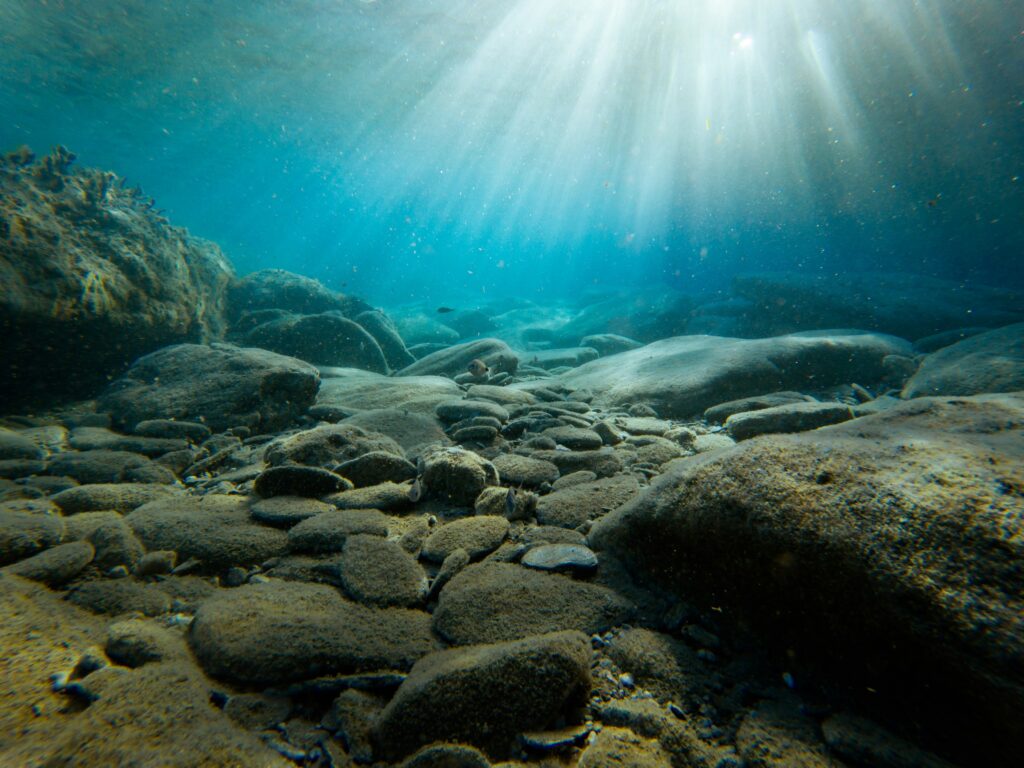
Buoyancy control devices
For underwater photographers, buoyancy control devices are essential tools. They allow you to hover effortlessly without bobbing up or sinking down. With them, you will never mess up a once-in-a-lifetime shot.
Good buoyancy will improve your photography and protect the underwater ecosystem. Coral reefs are fragile, and accidental contact can cause significant damage.
Anti-fog solutions
Anti-fog solutions are absolutely essential. A fogged-up viewfinder can turn shots into a blurry mess. It leaves you with nothing but frustration. What do they do? Well, high-quality anti-fog sprays or inserts for underwater photography prevent condensation from forming inside your dive mask or camera housing.
Some divers swear by DIY tricks like rubbing baby shampoo or spit on their lenses. However, investing in a proper solution is more reliable. Especially if you’re aiming to build a professional portfolio or impress potential clients for underwater photography jobs.
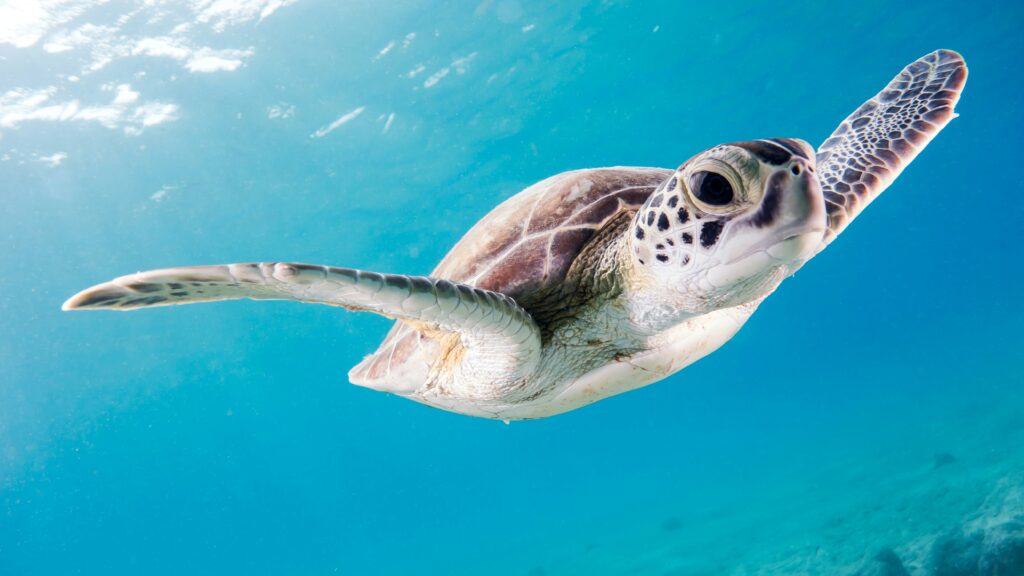
Floating hand straps & tethers
Without floating straps or tethers, your beloved underwater photography camera will forever unite with the ocean floor. Heartbreaking, right? And a big pain in your pockets, too.
Designed to keep your gear buoyant, these straps prevent costly accidents and save you the heartache of losing your investment. It helps save your high-end DSLR or GoPro, so it’s a must-have. Many straps come in bright colors, making it easy to spot your gear in murky waters — a true lifesaver during busy dives. For professionals working on underwater photography jobs or recording marine animals in captivity statistics, tethers add extra security.
Dive computers
Dive computers are devices that monitor your depth, ascent rate, and more. Basically, it’s ensuring you stay within safe decompression limits.
Dive computers like the Garmin Descent series step beyond the basics. With integrated compasses, air integration, and even dive log syncing to your smartphone, they’re very useful. Document photos for your “marine mammals in captivity” essay or shoot an underwater photography course project with the help of one! Then, you’ll realize it’s indispensable.

Camera settings for underwater photography
Some of the most crucial underwater photography tips to know is knowing how to use it effectively in different scenarios. Here’s a guide to essential camera settings that you should prepare before going underwater:
- Fast shutter speed and high ISO (for action shots): Always remember that when you’re photographing fast-moving subjects like darting fish or playful seals, use a fast shutter speed—1/500 or higher—to freeze the action. Combine this with a higher ISO (around 500) to compensate for the low light underwater.
- Avoid autofocus for clearer images: Autofocus often locks onto bubbles, sand, or other distractions. Instead, switch to manual focus and adjust it to the distance of your subject. Practice doing this quickly or you’ll miss your shot!
- Use strobes or external lights to enhance color: To keep the vibrant reds and yellows absorbed by water, rely on strobes or external lights. Position them to minimize backscatter and use diffusers to create even lighting that flatters your subjects.
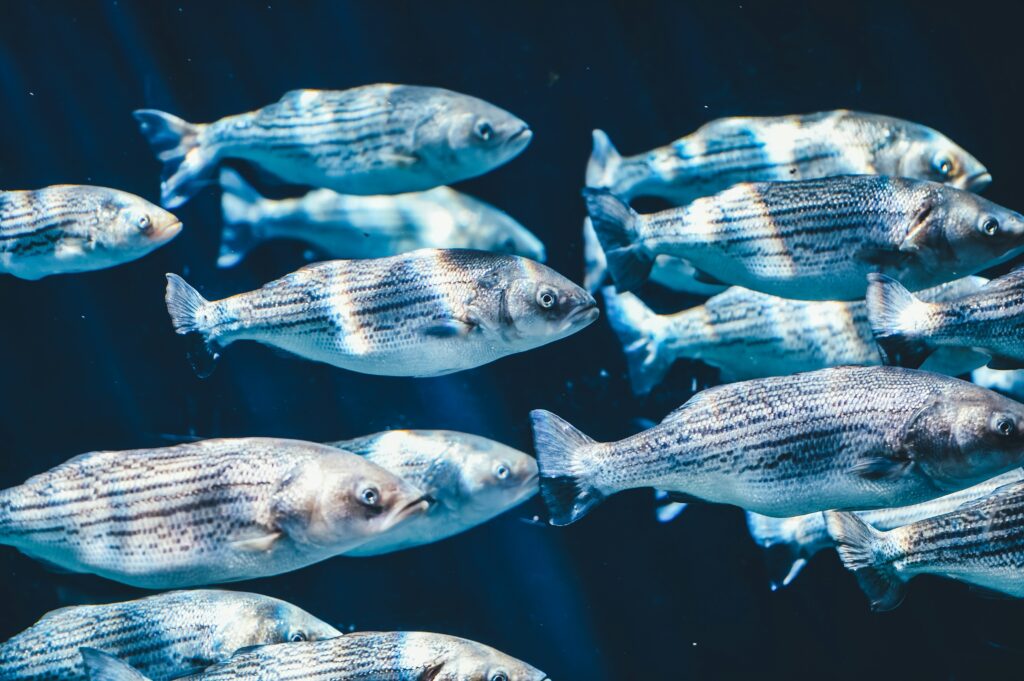
How to photograph marine life underwater
The best underwater photography tips are the ones about capturing marine life. No matter what kind you photograph, it requires adapting to the environment and refining your skills. Here’s how to level up your underwater photography game:
Respect marine life, read the environment
Avoid chasing, touching, or harassing animals to force a picture to happen. It stresses them out and can lead to unnatural behaviors that make your photos feel staged. Instead, practice patience. Marine creatures are naturally curious. So, if you stay still long enough, many will come to investigate you and take a peek into your lens. Take it from the professionals like Nat Geo photographers. They say that the best images come from letting the animals dictate the interaction. Respectful behavior enhances your credibility.
Finally, research the species you’ll encounter. Knowing their habits increases your chances of a perfect shot. But also, knowing what they don’t like could help you tons.
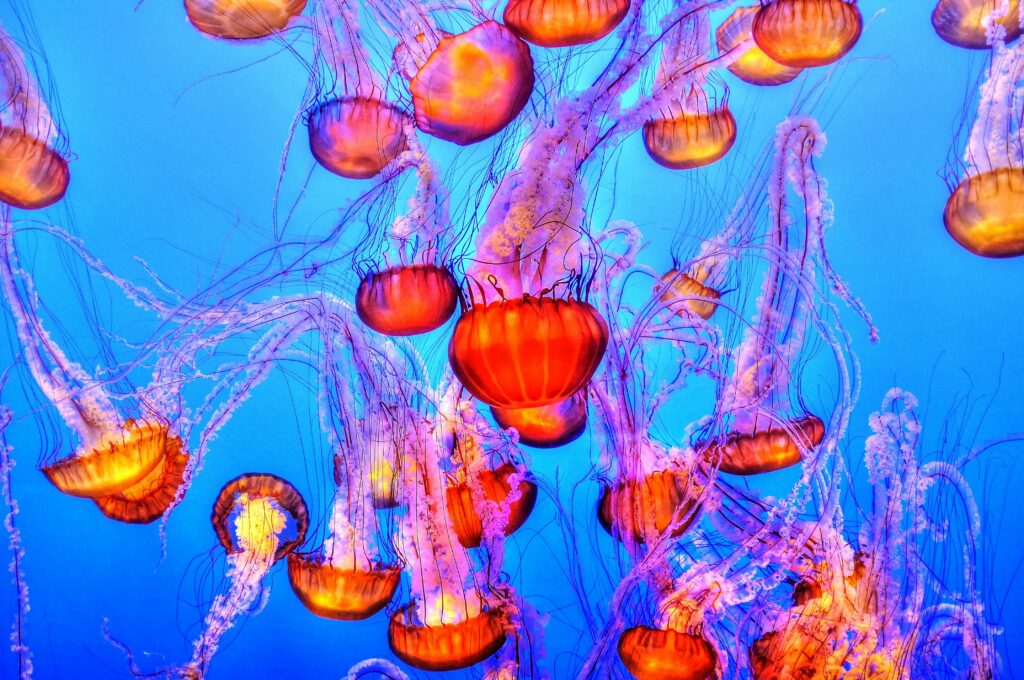
Practice buoyancy for underwater control
For underwater photographers, good buoyancy is critical. It ensures you stay steady while framing shots. Also, it prevents accidental contact with fragile marine ecosystems, like coral reefs.
Achieving neutral buoyancy allows you to glide effortlessly, focusing entirely on your underwater photography camera. This skill becomes even more important when shooting close-ups of sensitive subjects like seahorses or anemones.
Another thing you might learn in an underwater photography course is that buoyancy is often one of the first lessons. The ability to control your position and movement underwater enhances your safety and the overall diving experience.
Learn composition
Underwater, knowing composition becomes even more vital as you contend with dynamic subjects, limited light, and the ever-changing seascape. The right composition can turn a simple shot into a captivating narrative.
- The rule of thirds: Start with the classic rule of thirds. Mentally (or digitally on-camera) divide your frame into a 3×3 grid and position your subject along the lines or at their intersections. This adds balance and intrigue to your photo.
- Leading lines: Coral formations or the curve of a stingray’s wings guide the viewer’s eye through the image.
- Scale: Adding a diver or object for scale — especially in wide-angle shots — emphasizes the grandeur of underwater scenes.
- Experimentation: Don’t be afraid to break the rules, too, though. Play with negative space to highlight the vastness of the ocean or zoom in for a macro shot of intricate textures.

What to do after resurfacing
Now that we’re done with the preparation and execution process, let’s get onto the underwater photography tips for after the dive. Here’s a checklist you can follow:
- Rinse thoroughly: Immerse your gear in fresh water to dissolve salt residue. While it’s soaking, press all buttons and switches to flush out trapped salt crystals.
- Handle with care: Avoid leaving your housing in communal rinse buckets where other gear might damage it. Instead, use a separate and private rinse station or carefully monitor your equipment.
- Dry gently: Pat your gear dry with a soft microfiber towel and ensure no moisture lingers around seals or buttons.
- Store your gear smartly: Keep your gear in a well-ventilated, low-dust environment. Follow the manufacturer’s guidelines for storage and avoid exposing your equipment to extreme temperatures.
Study up on these underwater photography tips
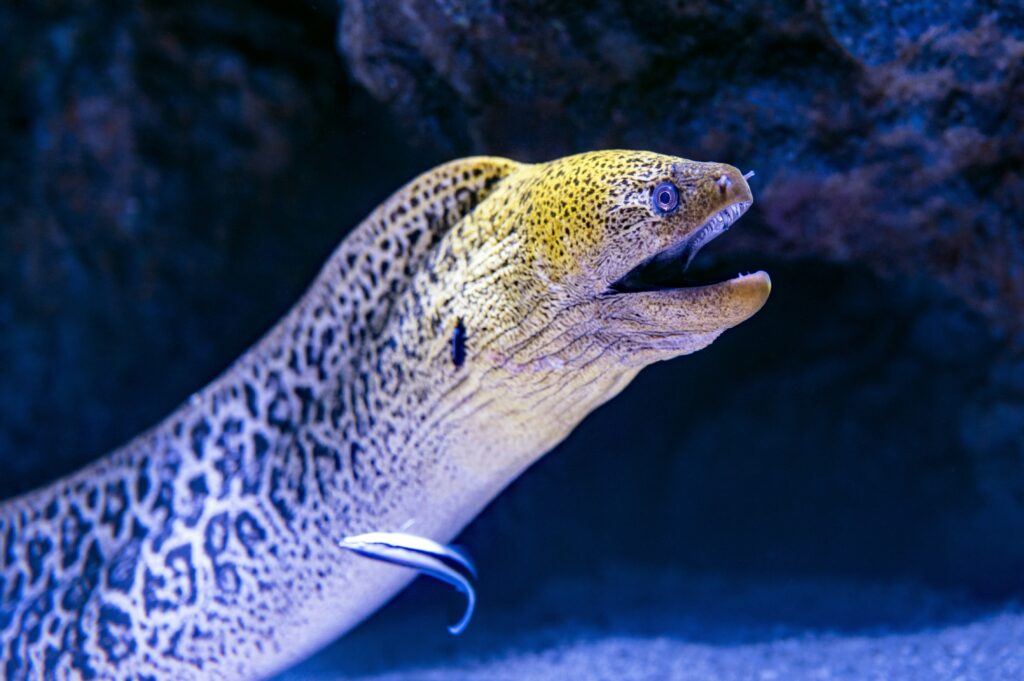
Underwater photography is both an art and a ticket to the mysteries of the deep. From perfecting your buoyancy to memorizing all the right camera settings, all the underwater photography tips listed in this guide are sure to reward the adventurous and the curious photographers. So, gear up, respect the marine world, and make every dive an unforgettable frame in your story.

